GLOBE Connections
GLOBE Connections: Phytoplankton Distribution
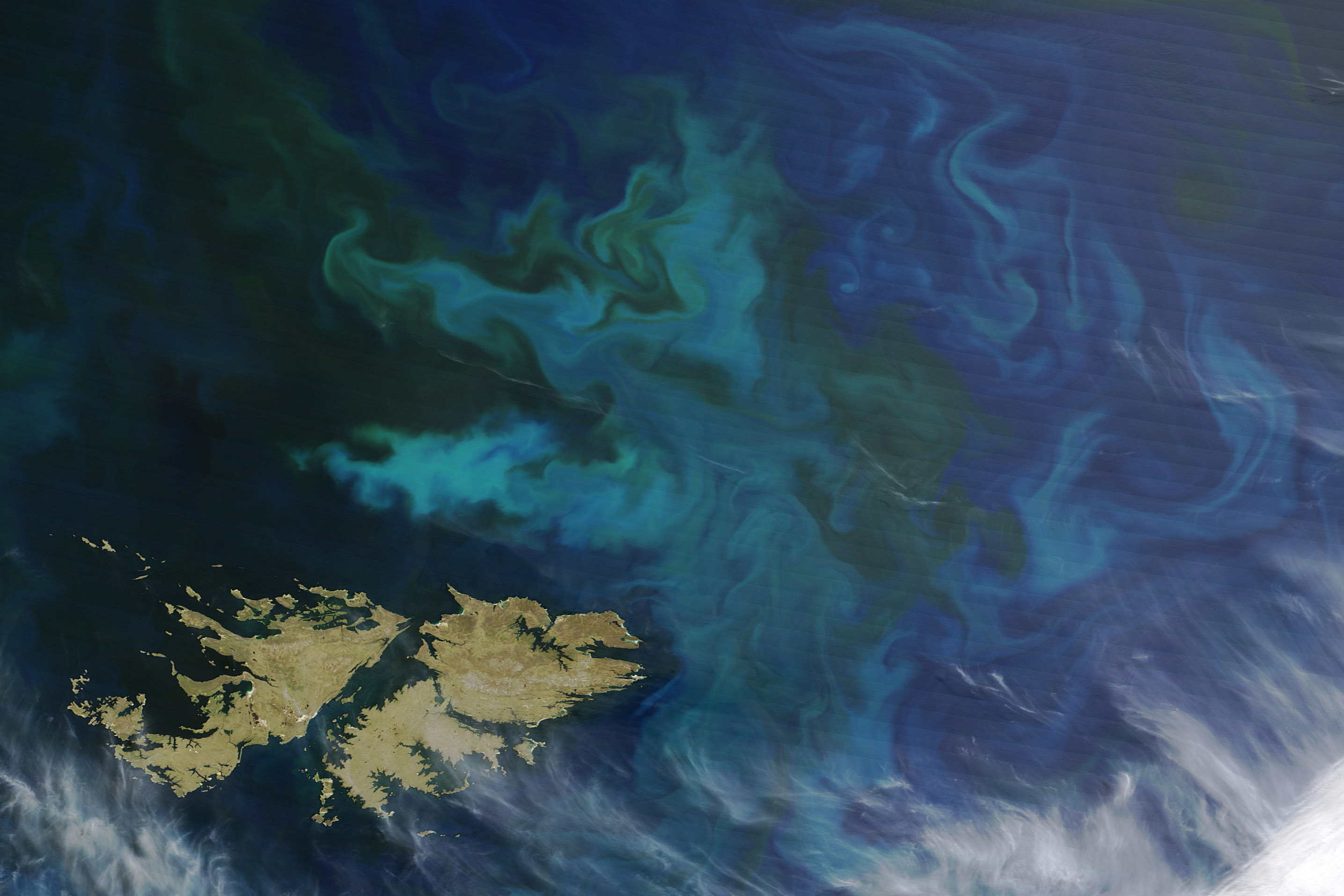
This resource helps to identify and access GLOBE protocols and hands-on learning activities that complement the Phytoplankton Distribution phenomenon. Students conduct their own investigations and see how their data related to global patterns by using GLOBE and My NASA Data together.
Visit the GLOBE Biosphere Protocols & Related ESDE Datasets page that outlines the datasets available in the Earth System Data Explorer. These data complement student GLOBE investigations using the following protocols.
Phytoplankton Distribution
Students use GLOBE protocols in rivers to see how the runoff might impact the ocean growth of phytoplankton.
Protocols
GLOBE protocols are used to collect many types of data to explore the conditions related to suitability for phytoplankton growth. Students can use the protocols to collect data and share their data with other GLOBE students around the world.
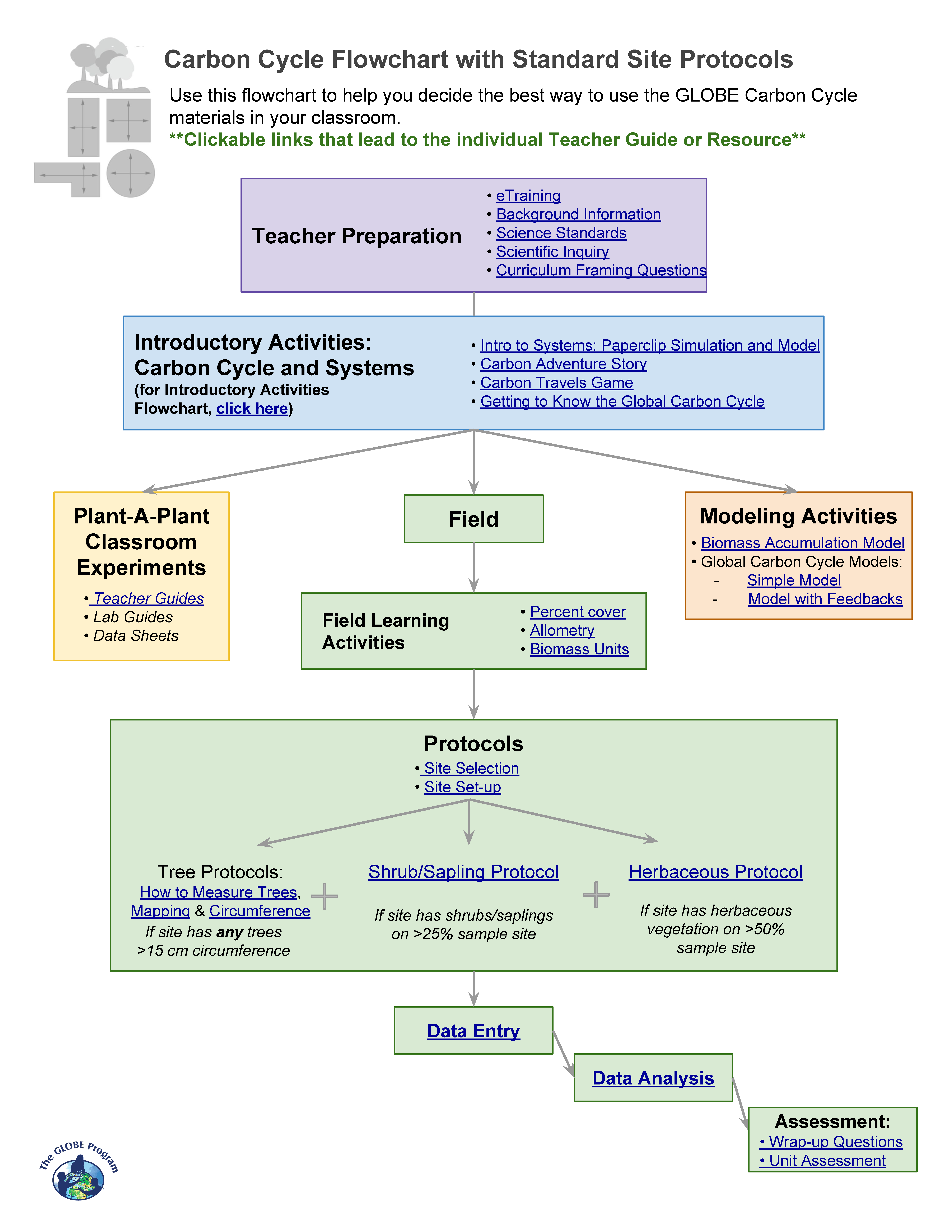
Carbon Cycle: Students learn the necessary skills and work in teams to set-up a carbon cycle site. Determine which vegetation types you will measure at your site. There are decision trees available to facilitate decision making as well as a variety of carbon cycle learning activities and protocols.
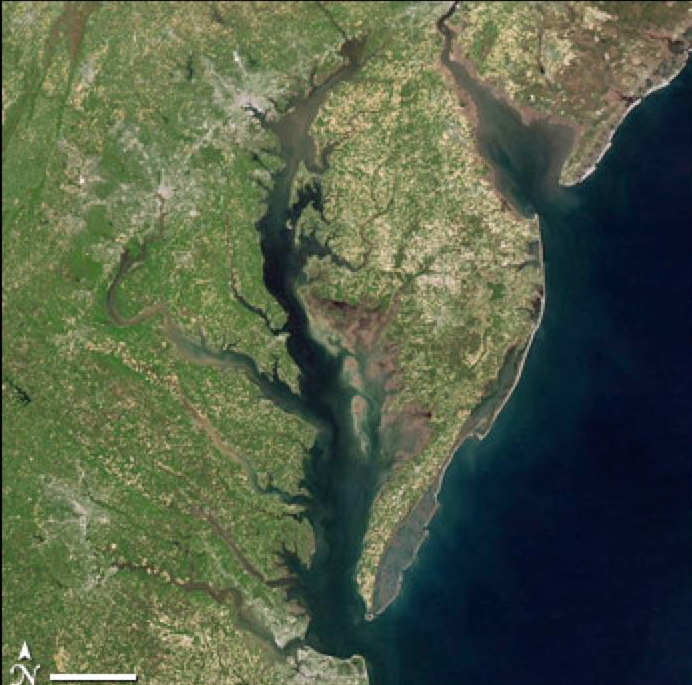
Dissolved Oxygen Protocol: Students measure dissolved oxygen in the water at their site using a dissolved oxygen test kit or probe.
Nitrates: Students will measure the nitrate-nitrogen content of water using a nitrate test kit.
Water Transparency: Students measure water transparency at their undisturbed study site using a transparency tube or Secchi disk.
Protocol Bundles
The ocean protocol bundle can be used in conjunction with phytoplankton data.
GLOBE Ocean Bundle - Oceans are complex ecosystems, which implies that their study needs to take into consideration several interrelated physical parameters, not to mention the mechanisms and processes which reflect the interaction between land and oceans along coastal zones as well as the interaction between the atmosphere and oceans. This group of protocols is to be jointly implemented to improve our knowledge about oceans.
The water quality protocol bundle can be used to evaluate conditions related to phytoplankton growth.
GLOBE Water Quality Bundle - As water interacts with the atmosphere, soil and the surrounding land cover bordering water bodies, and the surface over which the water flows, the water quality changes. Water quality determines what can live in the water body and how the water may be used. This bundle contains atmosphere, hydrosphere, and pedosphere protocols.
Learning Activities
Check out the three learning activities to help prepare students for collecting data and to support the integration of MND with GLOBE in your curriculum.
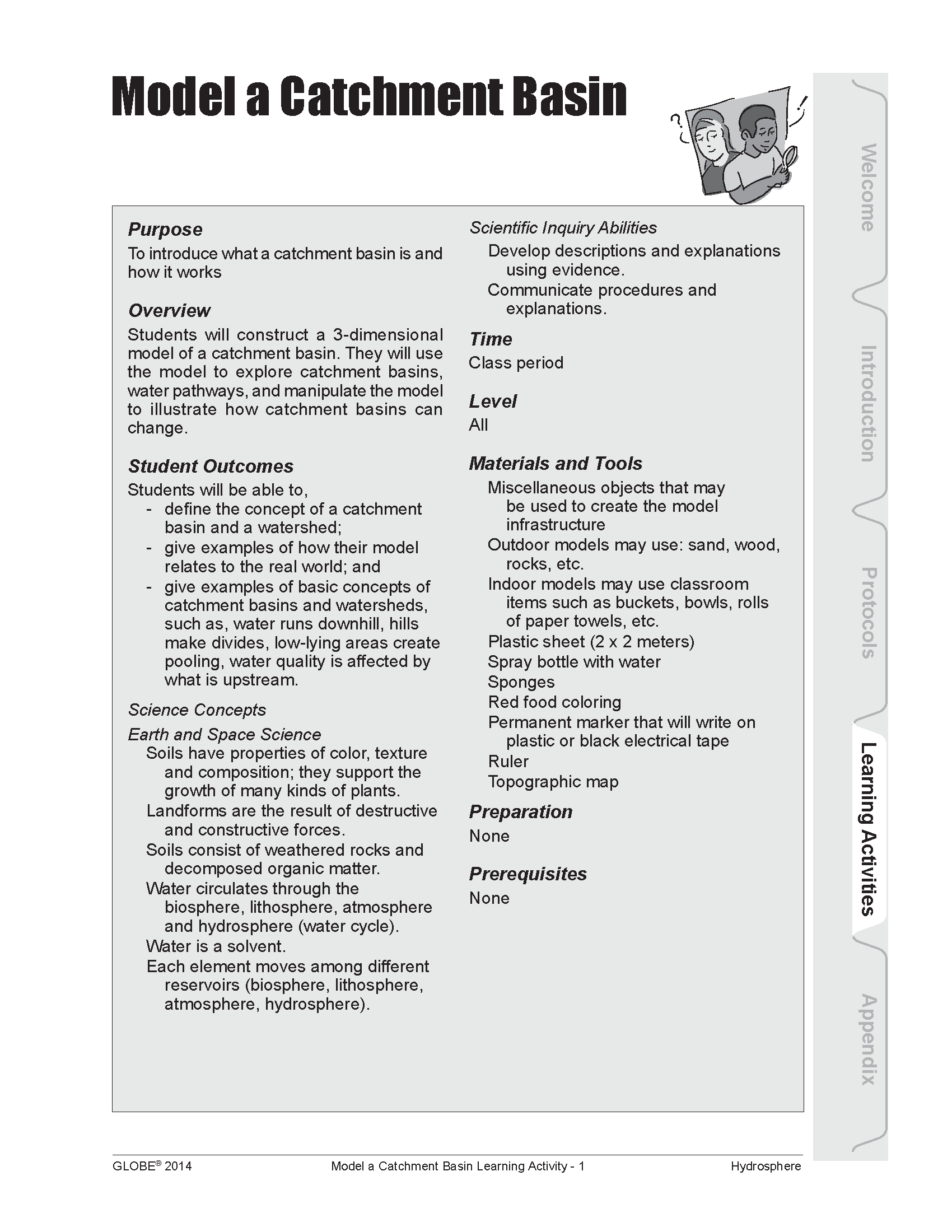
Overview: Students will construct a 3-dimensional model of a catchment basin. They will use the model to explore catchment basins, water pathways, and manipulate the model to illustrate how catchment basins can change.
Student Outcomes:
- Define the concept of a catchment basin and a watershed
- Give examples of how their model relates to the real world
- Give examples of basic concepts of catchment basins and watersheds, such as, water runs downhill, hills make divides, low-lying areas create pooling, water quality is affected by what is upstream
- Soils have properties of color, texture and composition; they support the growth of many kinds of plants
- Landforms are the result of destructive and constructive forces
- Soils consist of weathered rocks and decomposed organic matter
- Water circulates through the biosphere, lithosphere, atmosphere and hydrosphere (water cycle)
- Water is a solvent
- Each element moves among different reservoirs (biosphere, lithosphere, atmosphere, hydrosphere)
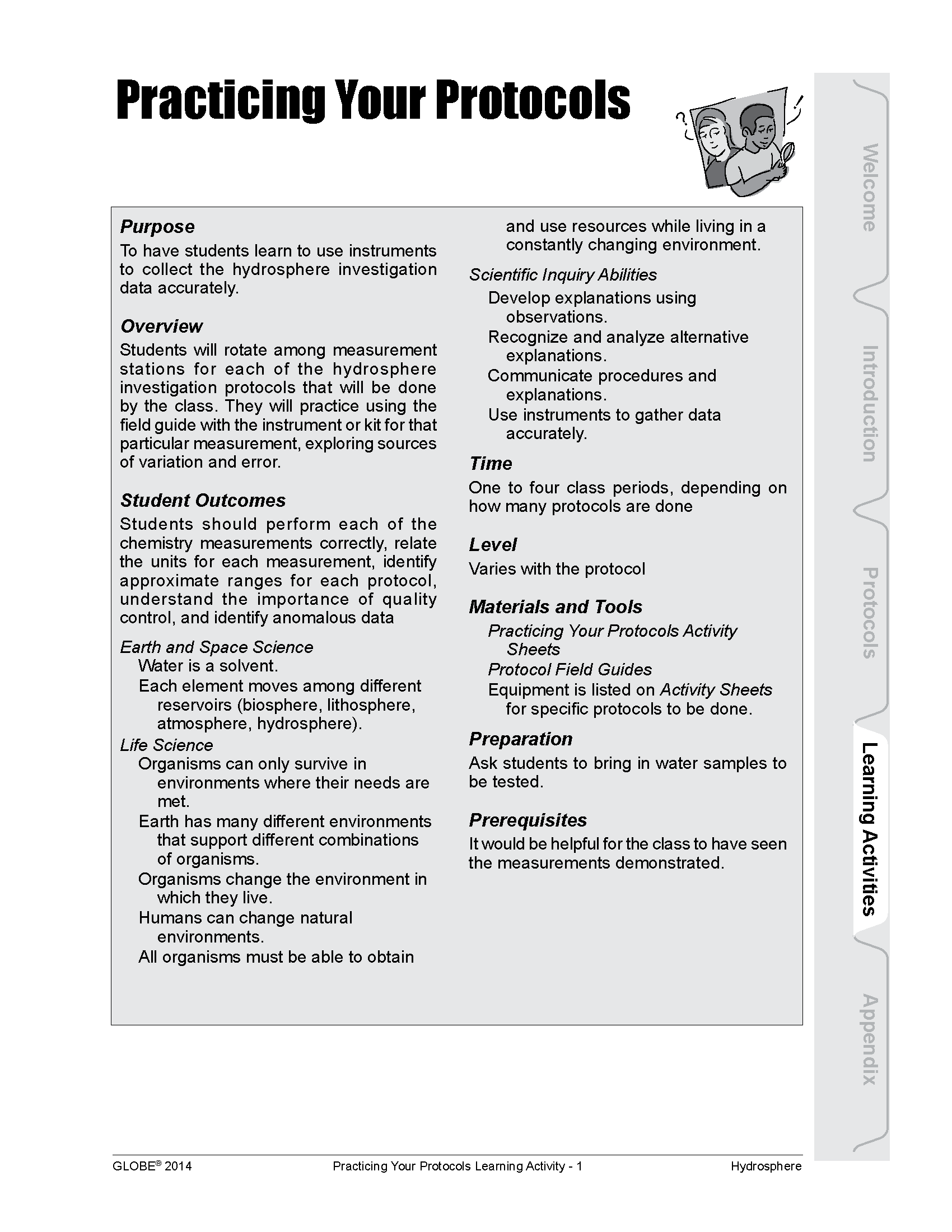
In the classroom, students practice using the instruments or kits for protocols, exploring the range of measurements and sources of variation and error.
Overview: Students will study and visit the Hydrosphere Study Site, conduct a visual survey to discover information about local land cover, water quality, and document their findings. They will use this initial investigation to raise questions about local land cover and/ or water chemistry issues that may require further investigation.
Student Outcomes:
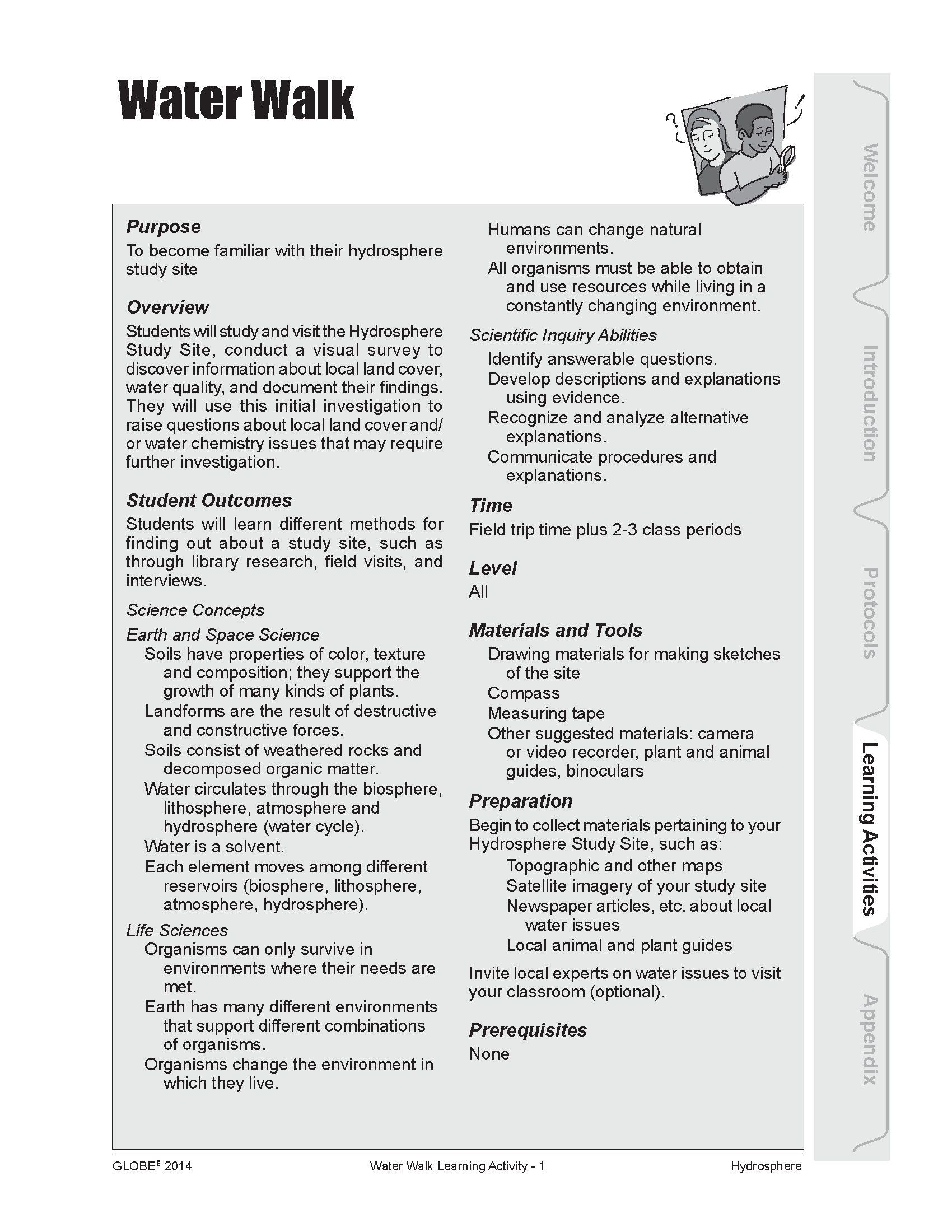
- Students will learn different methods for finding out about a study site, such as through library research, field visits, and interviews
- Soils have properties of color, texture and composition; they support the growth of many kinds of plants
- Landforms are the result of destructive and constructive forces
- Soils consist of weathered rocks and decomposed organic matter
- Water circulates through the biosphere, lithosphere (geosphere), atmosphere, and hydrosphere (water cycle)
- Water is a solvent
- Each element moves among different reservoirs (biosphere, lithosphere, atmosphere, hydrosphere)
- Organisms can only survive in environments where their needs are met
- Earth has many different environments that support different combinations of organisms
- Organisms change the environment in which they live
- Humans can change natural environments
- All organisms must be able to obtain and use resources while living in a constantly changing environment
Students will investigate how they use their senses for observation and why we use instruments to collect data.

